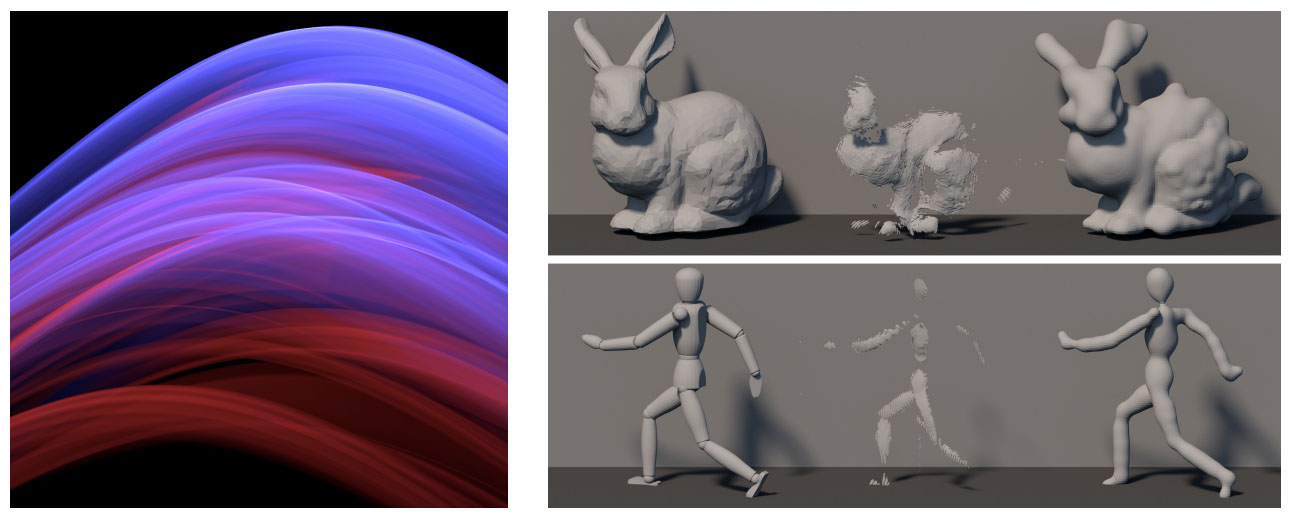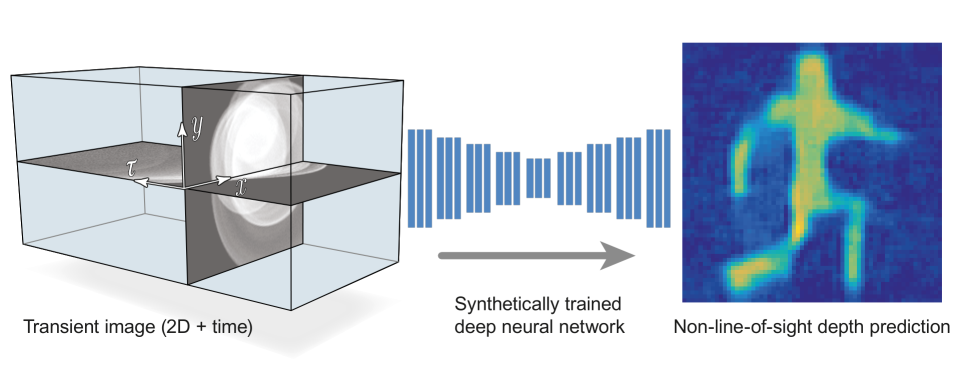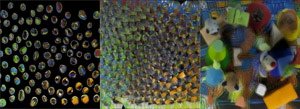Publications
Non-Line-of-Sight Reconstruction using Efficient Transient Rendering
Julian Iseringhausen, Matthias B. HullinACM Transactions on Graphics 39 (1), 2020.

In this paper, we present an efficient renderer for three-bounce indirect transient light transport, and use it to reconstruct objects around corners to unprecedented accuracy.
Deep Non-Line-of-Sight Reconstruction
Javier Grau Chopite, Matthias B. Hullin, Michael Wand, Julian IseringhausenProc. IEEE Conference on Computer Vision and Pattern Recognition (CVPR), 2020.

The first deep-learning framework for reconstructing object shapes around a corner.
4D Imaging through Spray-On Optics
Julian Iseringhausen, Bastian Goldlücke, Nina Pesheva, Stanimir Iliev, Alexander Wender, Martin Fuchs, Matthias B. HullinACM Transactions on Graphics 36(4) (Proc. SIGGRAPH), 35:1--35:11, 2017.

Raindrops on a window heavily distort the view of the scene. We show that a fully calibrated 4D light field can be recovered from a single photograph taken under such adverse conditions.
Machine Learning Assisted Identification of People Hidden Behind a Corner
Piergiorgio Caramazza, Alessandro Boccolini, Gabriella Musarra, Matthias Hullin, Roderick Murray-Smith, Daniele FaccioComputational Optical Sensing and Imaging, 2017.
We demonstrate the use of machine learning to classify temporal histograms of the light-echoes backscattered from bodies hidden from view around a corner, captured by a SPAD camera.
Tracking Objects Outside the Line of Sight using 2D Intensity Images
Jonathan Klein, Christoph Peters, Jaime Martín, Martin Laurenzis, Matthias B. HullinScientific Reports (Nature Publishing Group), 6, 32491; doi: 10.1038/srep32491, 2016.

We demonstrate the tracking of objects outside the line of sight from 3rd-order indirect diffuse reflections, captured using a regular laser pointer and a 2D camera.